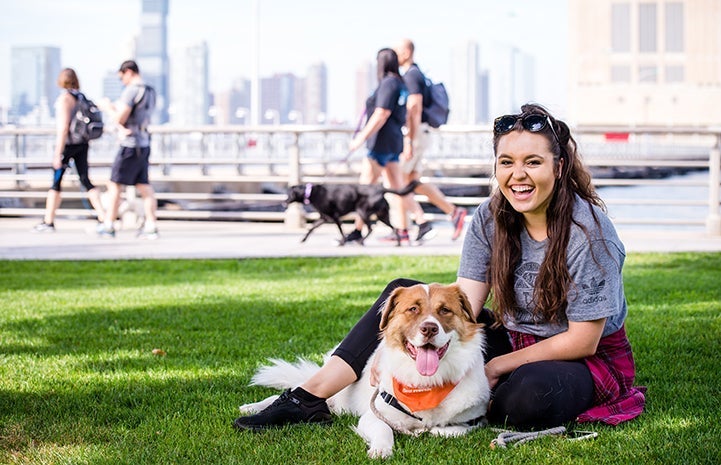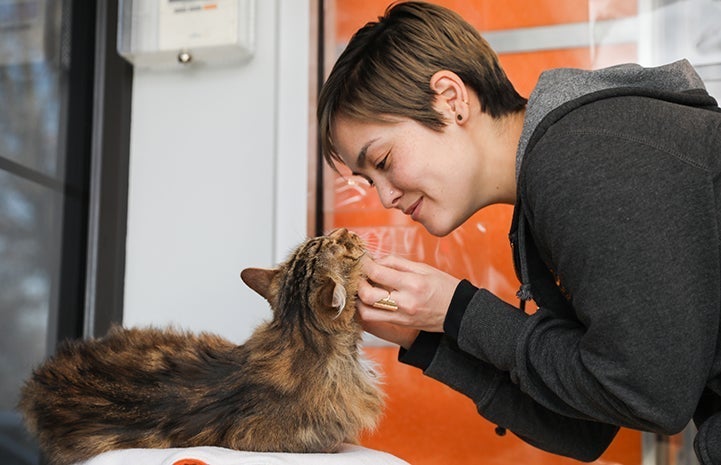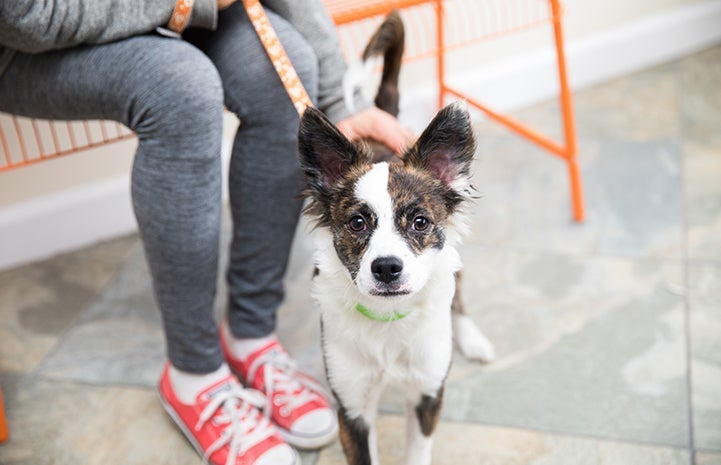
Animal Coalition: How to Build a Successful One
In this resource, Gregory Castle, Best Friends CEO, walks you through a dozen ways to help build a successful coalition of animal welfare organizations.
Table of Contents
1.) Know yourself.
2.) Take the lead.
3.) Hunger for knowledge.
4.) Give!
5.) Use the win/win approach.
6.) Don’t allow bad-mouthing.
7.) Be prepared.
8.) Be nurturing.
9.) Remind everyone that it CAN be done!
10.) Become a media hog.
11.) Recognize that you’re part of a team.
12.) Don’t delay – do it today!
1.) Know yourself.
Building an animal coalition is about leadership. You may be a good leader; you may not. You may have certain qualities required of a leader, but not others. You may be the type of person who naturally takes the lead in almost every situation you find yourself in. Or you may feel more comfortable deferring to others, and following a leader you trust. Understand where you fit in this spectrum. Recognize your own leadership skills, or lack of them.
You may understand that there is a need for respected leadership in your community of animal-helping organizations and individuals, but feel that you are not the person to provide it.
You may feel that the leadership that does exist in your community is flawed, for whatever reason, and is therefore incapable of building a satisfactory, working coalition. If so, are you able to positively supplant that leadership, and then provide good leadership without alienating people? If not, do you know someone who could?
Are you the type of person who works better in the background, supporting and guiding, providing feedback for a visible leader? Know yourself. Understand your leadership strengths and weaknesses. From there, you can work to provide or support the leadership required for a successful coalition.
2.) Take the lead.
Or, find someone who will. If you do decide to provide the leadership required, what then? Be a visible leader. You will almost certainly need to be more subtle than announcing to all involved that you are now their leader! To be an effective leader, you will need to build confidence, support, trust, and recognition that you have the interests of others at heart. This may take time.
You need to be a diplomat, giving support to all, large or small, influential or not. Develop a plan that can benefit all, showing special favors to none.
Be prepared to play a part in reconciling differences. Look for points of agreement and help opposing parties to focus on them. Set aside your own points of disagreement. Encourage mutual appreciation of involved groups and individuals.

Be accessible. Be available. Respond promptly to participants, with affinity and support. Become visible as the leader of the coalition you are building.
3.) Hunger for knowledge.
People need a focus. We all need to know to whom we can turn for direction. Understand everything you can about the problem. Conduct surveys. Read. Do research. Talk to others; pick their brains! If you are not already one, become an expert.
Get to know everything you can about the groups and organizations involved in your coalition – their methods, their physical setup, the key individuals involved, the number of people who work with them and volunteer with them. Who are these people and what are they like? How do they see their respective positions in your community?
What is the history of each organization? How do they raise money? How successful are they? Find out as much as you can about their finances.
About adoption and spay/neuter programs: How do they adopt out their animals? Where do they adopt them out, and how often? What spay/neuter programs do they operate? How many animals do they fix? For all their activities, how do they advertise?
About veterinarians: Find out the size of their clinic, the number of spay/neuters they perform, their attitudes toward rescue groups, whether they offer discount prices.
About animal control shelters: Inquire about their size, to whom they’re answerable, and how they operate. How do they keep records (and is their record-keeping effective)? Do they work with rescue groups?
There is a lot to discover. You can do much to build your leadership position by simply asking questions and listening. Be understanding and sympathetic.
4.) Give!
Develop a plan for your coalition, and for the participation of its members. Always look for ways in which your plan can benefit coalition members. Aim to provide something that participants value, something that can help solve their problems.
If you are able to develop resources (money, donations-in-kind, volunteers, technical and professional expertise, Internet resources) independent of your member agencies, make them available to coalition participants wherever there is a need.
Look for opportunities that can benefit many participating organizations simultaneously. Organize an adoption event involving different groups. Set up the venue, establish and communicate the ground rules, provide advertising and public relations. Organize a discount spay/neuter program in which a number of member groups participate. Make arrangements with community veterinarians, then offer availability of their services to the groups.
Wherever possible, coordinate the activities of different participants, combining resources to the greater benefit of all.
Develop a publicity campaign – TV and radio appearances, press releases, PSAs – that can be used to promote the work of individual member organizations. Get them the media attention they may not have the time or expertise to arrange themselves. Become a benevolent rich uncle, or aunt!

See how your community is doing
5.) Use the win/win approach.
In all your planning efforts, make win/win your guiding principle. Look for ways in which all parties involved can benefit.
One organization may have a surplus of donated pet food, but be short on volunteers to help transport animals to a mobile adoption. Another organization that needs food may be able to provide volunteers. Propose a deal.
A new group may need help from an attorney with their 501(c)(3) application. The attorney on your board may be able to help. In return, the new group can distribute your spay/neuter coupons.
There is usually a way in which commercial interests that contribute to your programs can benefit from the association. Offer to publicize the services of a boarding kennel or groomer in return for help with your fostering and adoption programs.
If you know of a veterinary office that also conducts dog training, see if they will provide discount medical services in return for directing people who adopt dogs to their training courses.

Encourage veterinarians to participate in discount spay/neuter programs on the grounds that they will thereby reach new clients for more profitable services such as routine examinations and vaccinations.
A shopping mall or large store which provides a venue for an adoption event can receive much added traffic as a result of promotion for the event.
6.) Don’t allow bad-mouthing.
You or your organization may not agree with some of the methods, the policies, the plans or principles of other coalition members. You may disapprove of some of the ways they do things, their rhetoric, or their beliefs. But we are talking about details here. If they subscribe to the basic principles of the coalition, and have the good of the animals at heart, they can be a valuable part of your alliance.
Establish ground rules for participation, then welcome those who subscribe to those principles. Always keep your focus on what you have in common – encourage a feeling of fellowship.
Above all, don’t criticize other groups, individuals, plans, or policies. Don’t allow coalition members to publicly criticize other members. And discourage private criticism.
Your aim is to build confidence in your leadership and a sense of being part of a group with a strong sense of identity, high morale, and pride in its achievements and those of fellow coalition members.
Cooperate with those who work in a totally different part of animal welfare than you. For instance, consider including animal control people in your coalition. (Among animal control officers, 99 percent dislike the practice of euthanasia. They are not bloodthirsty killers!) Remember, that is where many of the homeless animals are located.
7.) Be prepared.
Everything will not always go smoothly – problems will arise. Some people will disagree with you, your organization, your plans and policies for the coalition. You may be criticized, even bad-mouthed. Be prepared.
In extreme cases, when there is entrenched opposition or disagreement with you, the best policy may be to “shake the dust from off your feet” and move on. There may be some who can never be a part of your alliance.
But, wherever possible, look for the common ground. Avoid defensiveness. Promote points of agreement. Encourage people to set aside their disagreements or arguments and appreciate the efforts of others to help the animals.
Focus on the animals. Remember your mission, and that of your coalition. All of you are there for the same purpose.
8.) Be nurturing.
Your single most important job as leader of the coalition is to build up the morale of your participants. Congratulate them on their accomplishments; compliment them and their people on work well done.
Your group has come together sharing a mutual desire to achieve more. Some members may need ideas or other resources, but more than anything, they need a strengthening of their spirits. Ideas will flow from the positive feelings generated by the coalition.
High morale attracts people, money, and other needed resources. Success breeds success. Solutions to the problems members face will come naturally as a result of the high energy generated by success and positivity.
With animal rescue work, there is a special problem. The intensity of feeling for the animals and the often overwhelming scope of the problem make it easy for well-intentioned people to sink beneath the waves, become discouraged, and burn out. Many simply cannot make the decisions necessary to save only some of the animals they encounter. The emotional strain is too great.
The solution is to help others focus on the good they are doing for the animals. Reinforce the good feelings they have from what they have been able to achieve. Be sympathetic and understanding of their difficulties, stresses and strains, but guide their attention back to their successes.
Another difficulty afflicting many who are concerned with helping animals is low self-esteem. This is evident in body language, dress, and public presentation. Your job as a coalition builder includes communicating and reinforcing a sense of the importance of the work of your members, and of their personal worth. Your goal is for your participants to feel that they are engaged in the most important endeavor there is.
Above all, nurture their spirits.
9.) Remind everyone that it CAN be done!
The magnitude of the problem we face is often so great that it is easy to succumb to a sense that what we are attempting is impossible. There are so many animals to save. There are so many unfixed animals. There are so many people who will never give their animals the love and care they deserve. It’s impossible!
Attempting to do what you feel is impossible is a debilitating feeling, to say the least. It saps the spirit, and leads to chronic discouragement and expectations of failure. And these feelings are impossible to keep to yourself. Your discouragement infects others and soon the task is impossible!
Your coalition members must not be allowed to feel that the objectives of your alliance are impossible to achieve. Instill a sense of possibility – we can do it! Emphasize successes and positive achievements. Draw attention to good results. See the glass as half-full, and encourage others to do the same.

Of course, some things are impossible! Be sure to set the goals for your coalition at a realistic level. Some people will have higher expectations than others. Avoid the mistake of allowing those with the lowest expectations to dictate your goals. The lowest common denominator should never be your guide.
Be aware of the mindset of your participants. Those who feel an undertaking is impossible carry an atmosphere of negativity. Counter that atmosphere and do not allow it to affect others. Work on encouraging those people in particular to feel the positivity of success.
10.) Become a media hog.
Positive media exposure is essential for the success of your endeavors. Getting the word out will bring interest and involvement from your community. Ensure that you have one or two spokespersons for your coalition. Cultivate relations with media outlets, so that they become your friends. Seek out reporters, producers, anchor people, and DJs who are sympathetic to animals and want to help. Go after appearances on TV and radio; get articles into the local print media (e.g., newspapers, newsletters).
There are many opportunities for getting media attention for your coalition. TV stations are always looking for warm and fuzzy animal stories (perhaps to offset all the bad news on TV!). The opportunities in TV include in-studio interviews on local news shows, features on your shelter or an adoption event, community interview programming, “pet-of-the-week” appearances, and special stories about incidents or issues concerning pets in your community. Radio stations need material for call-in shows, drive-time talk between the music, studio interviews, and news items. Public service announcements can be used to promote your events and programs.
Learn to use the media. Always take a dog or cat with you to the studio – chances are they make for more appealing video than you do! The TV people will love you for it, and want you back for more. Make any events you hold as photogenic as possible.
Become well-known. It will build momentum and get results.
11.) Recognize that you’re part of a team.
Whether you have chosen the role of leading your coalition or playing a different role within it, you are part of a team. By definition, working with a coalition is a team project.
This may sometimes mean being flexible, bending or even compromising. It will certainly mean being supportive of other members of the team. Be prepared to set aside differences of opinion in the interests of the overall goal. Be prepared to work alongside people you don’t always get along with. Remember that you are all in this together; you have a common purpose and common goals.
Find a basis for respecting and appreciating the efforts and contributions of others. No matter what part you play, large or small, communicate your appreciation of whatever part they play, large or small. You will all gain from mutual support. And most of all, the animals will gain.
If you are not leading your alliance, cooperate with those doing the coalition-building. They need your support, just as you need their leadership. Be proud of your coalition and its achievements. Boast about the results – in particular, the results of other team members. Build them up, strengthen them.
12.) Don’t delay – do it today!
Start now. Even if you have no concrete plans to build a coalition, you can start right away. Even if you never intend to play a leading role in creating a formal alliance, you can begin to lay the groundwork for working together.
Avoid the mistake of giving yourself excuses for delaying the process of coalition-building. There is always somewhere to begin. Get to know other organizations and individuals, and encourage them to get to know you. Begin communicating with them; begin befriending them; begin to build mutual respect and confidence. If the road ahead is long, start as soon as possible.
You may find that some or all of your prospective coalition partners are not ready to work together in an acknowledged or formal alliance. They may need time for the healing of old wounds. You can still start to create cooperation, even without talk of “coalition-building.” Use imagination, resourcefulness, and diplomacy.
When the time is right, suggest working together, or begin talking about a formal alliance. Begin by focusing on common ground. Look for areas where all parties can benefit from the cooperation. Continue to build confidence and trust by respecting the efforts of others.
Allow your common love of the animals to be your guide.
